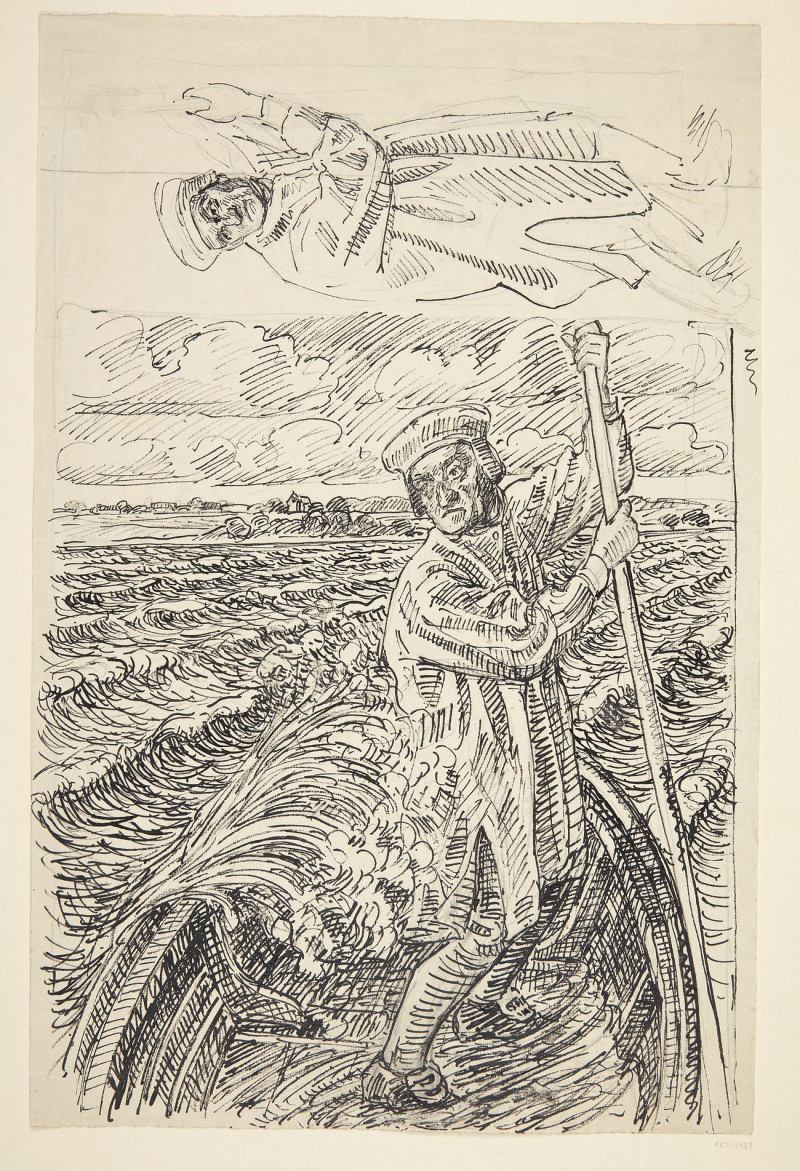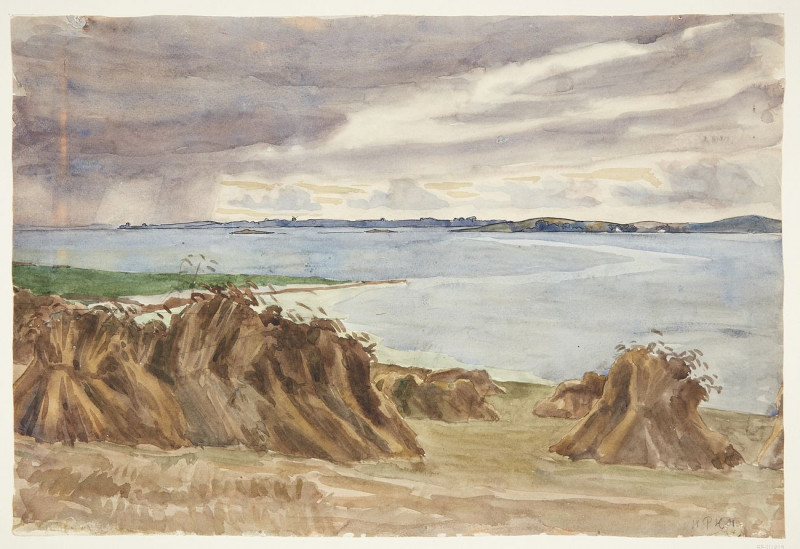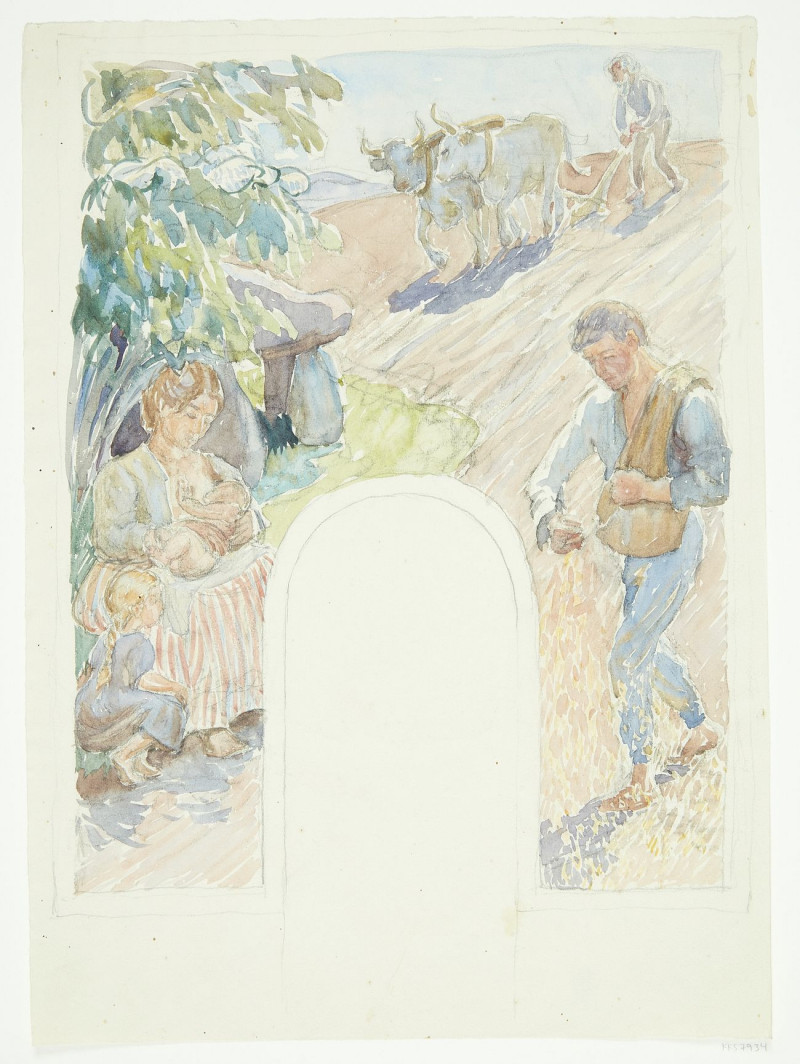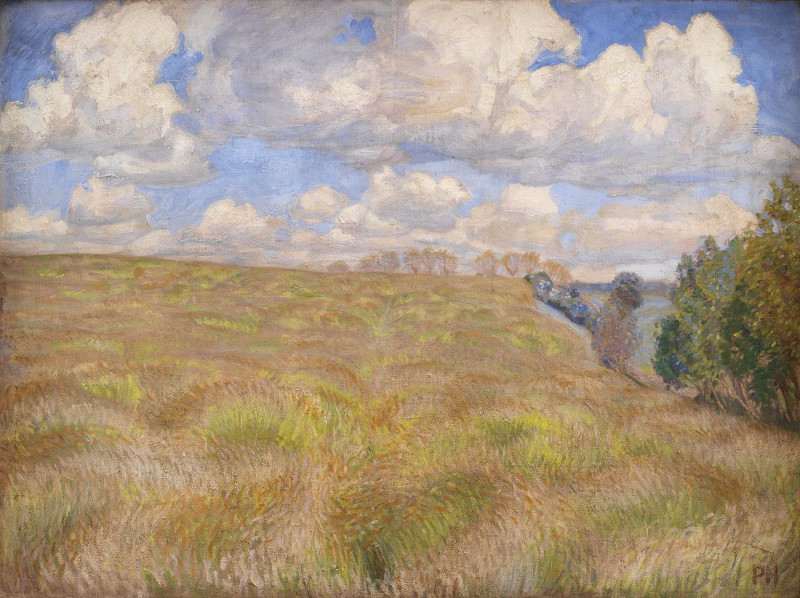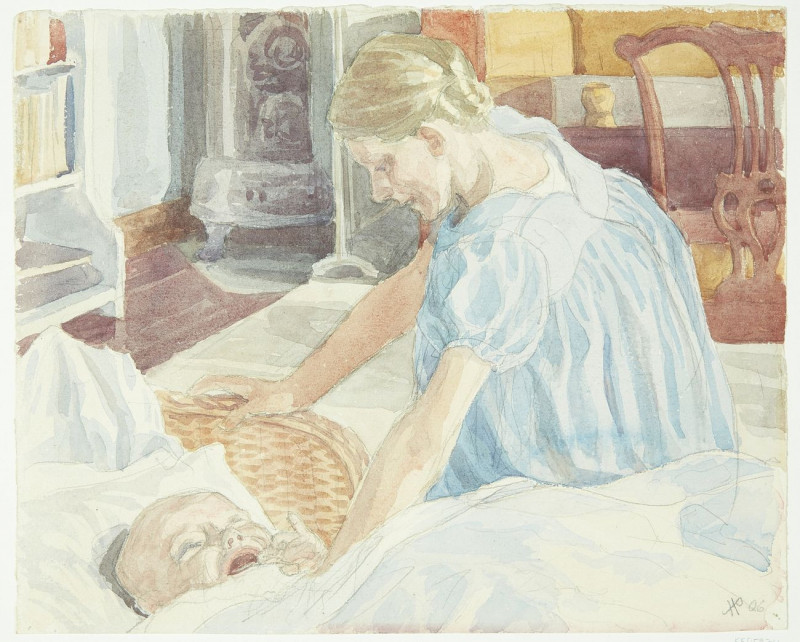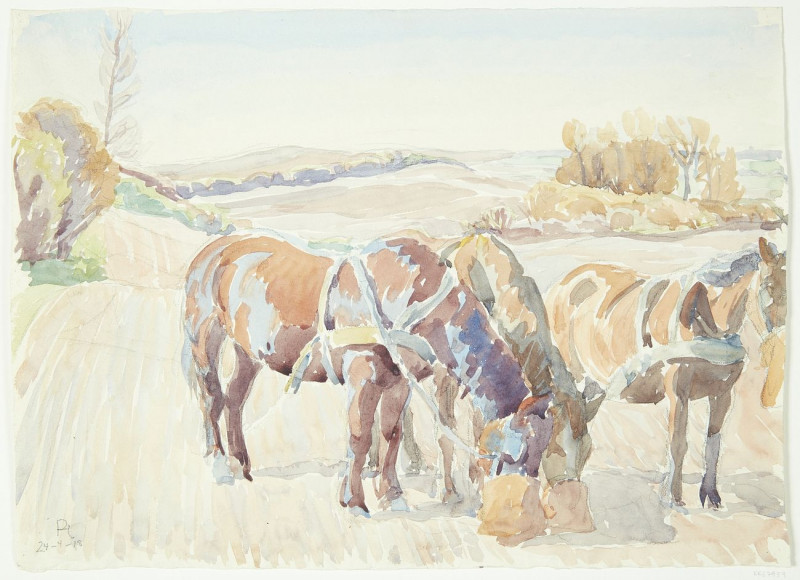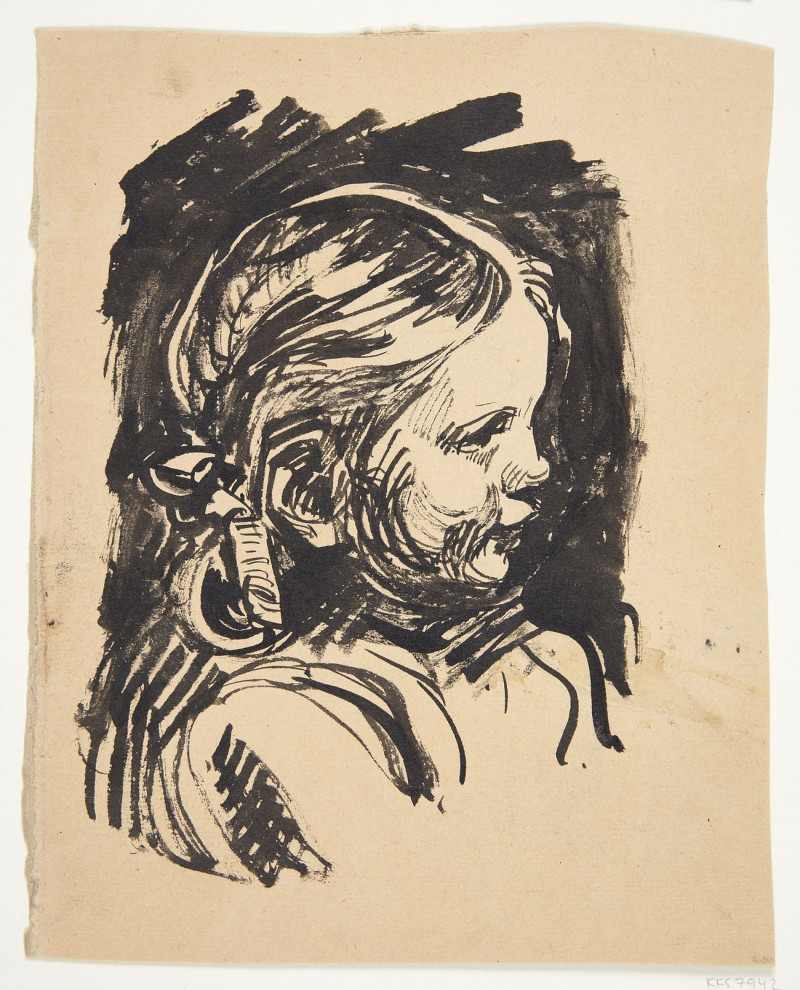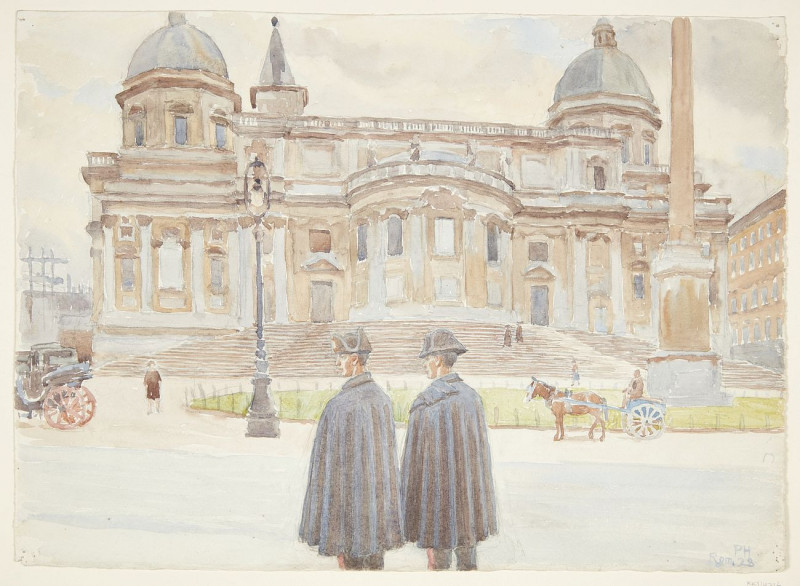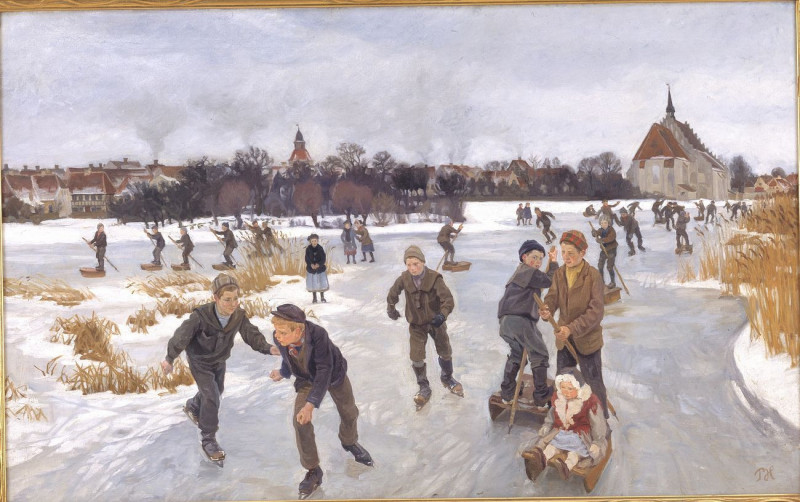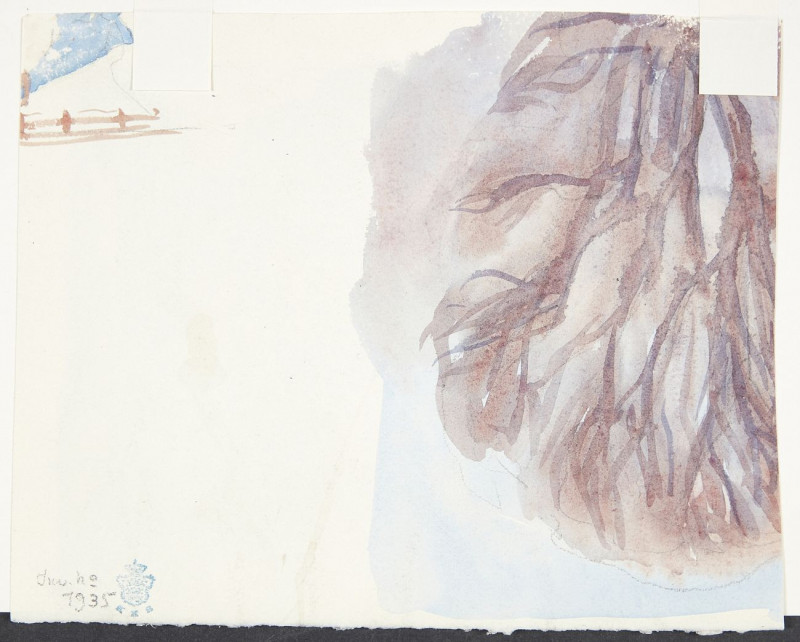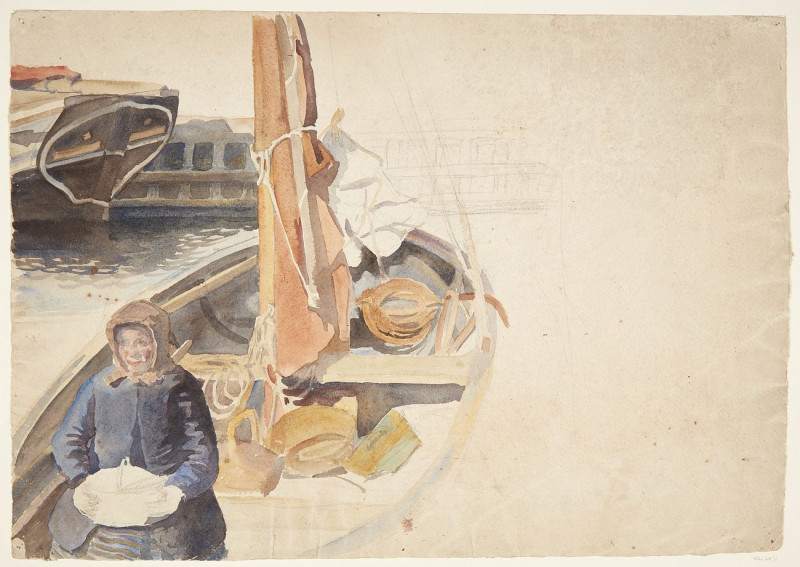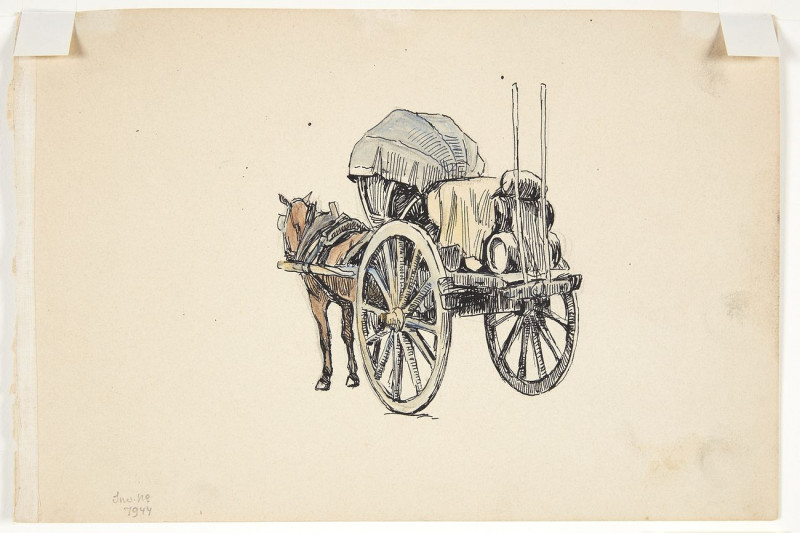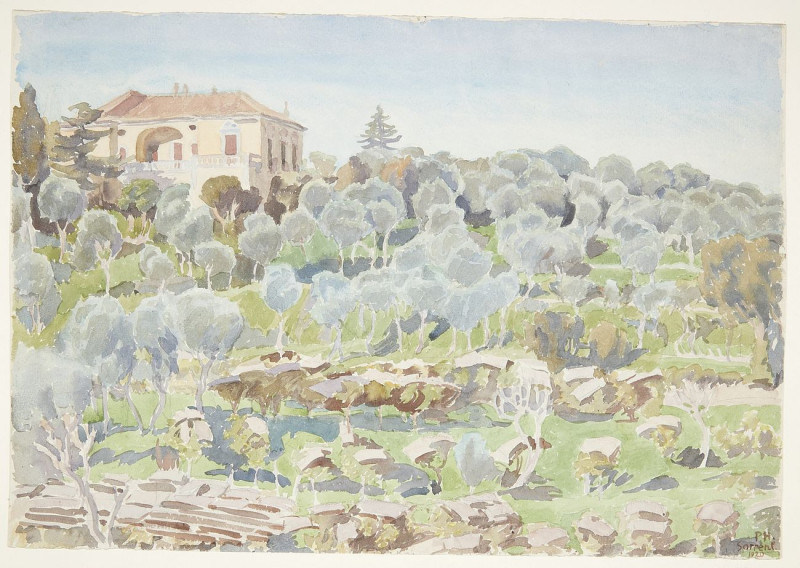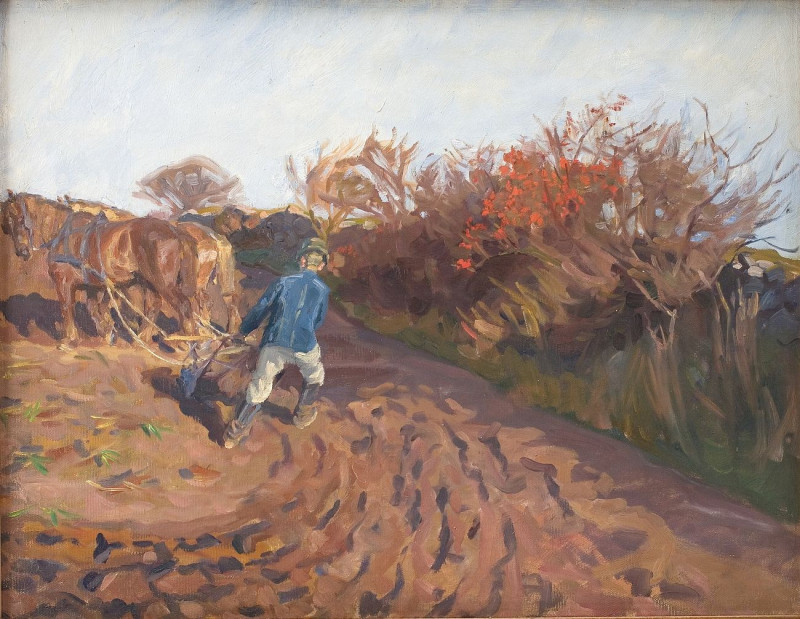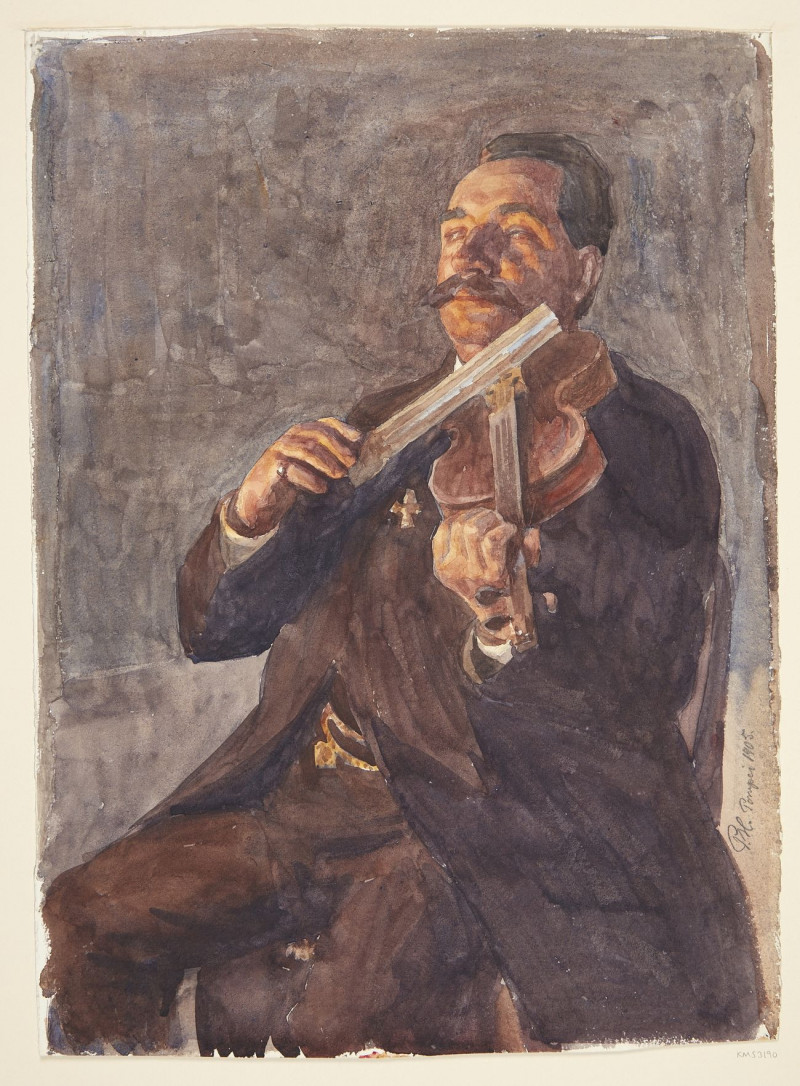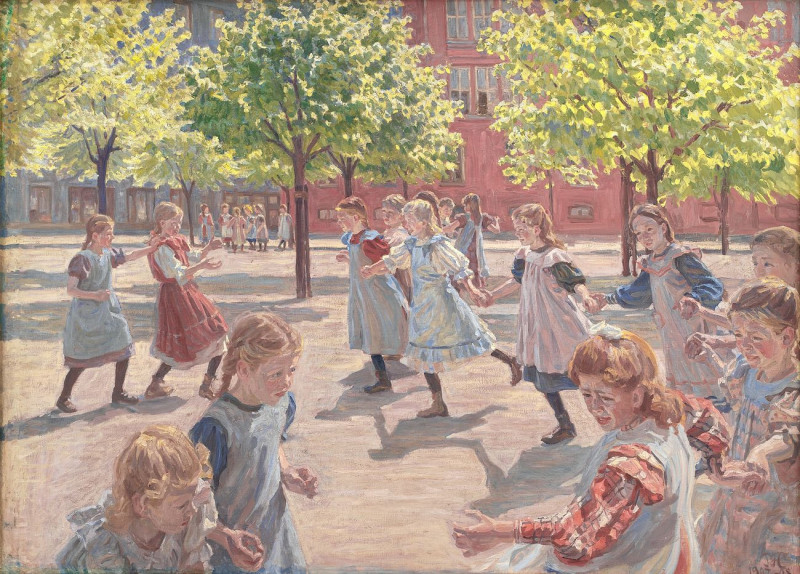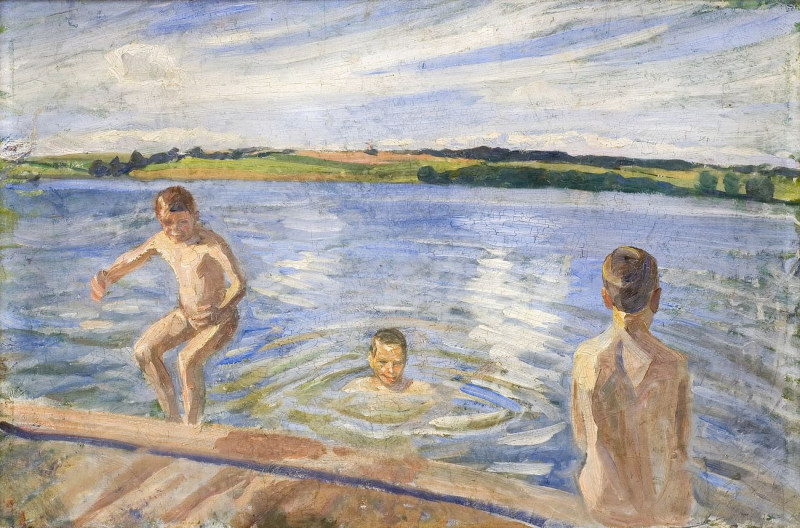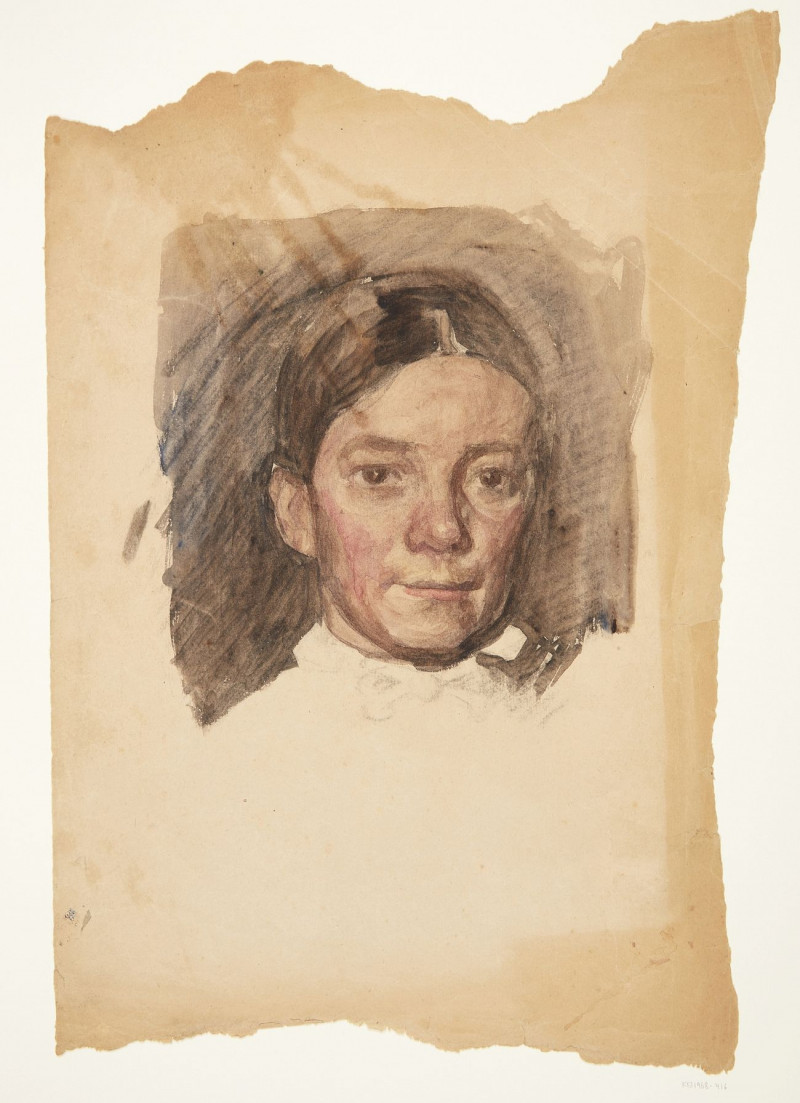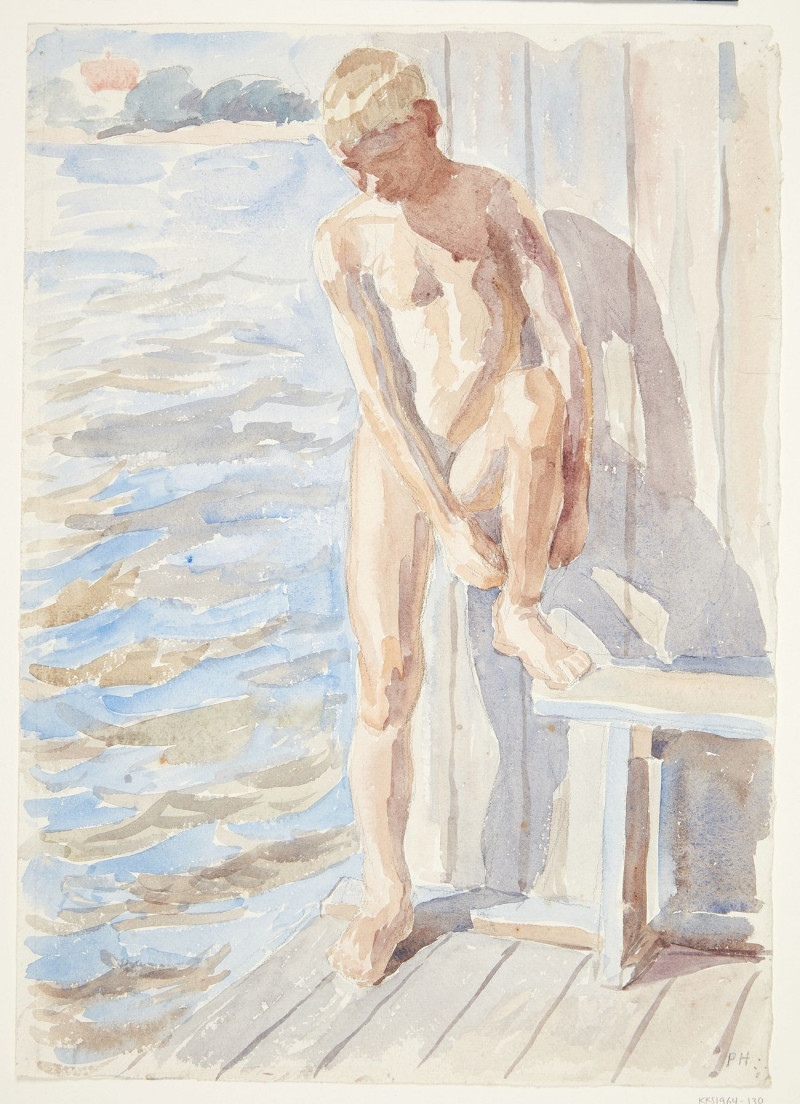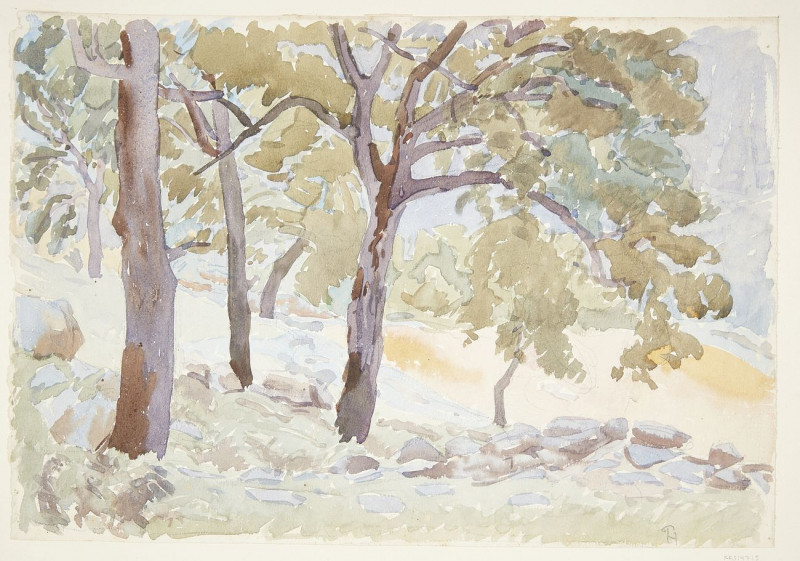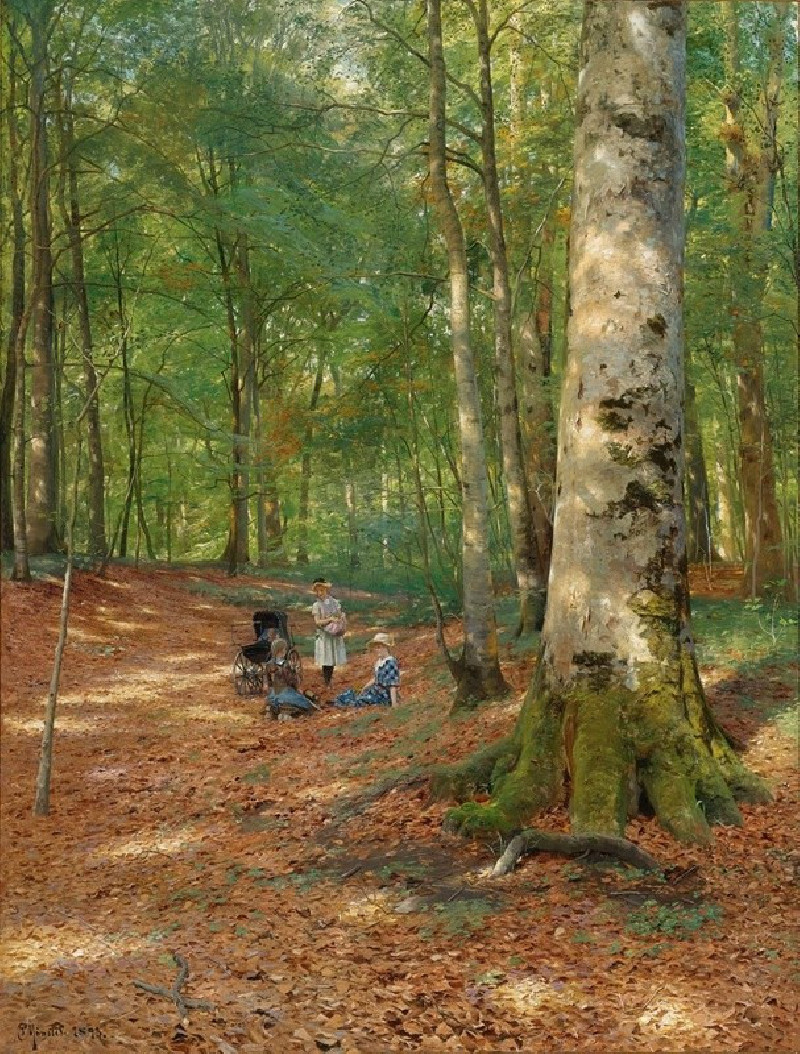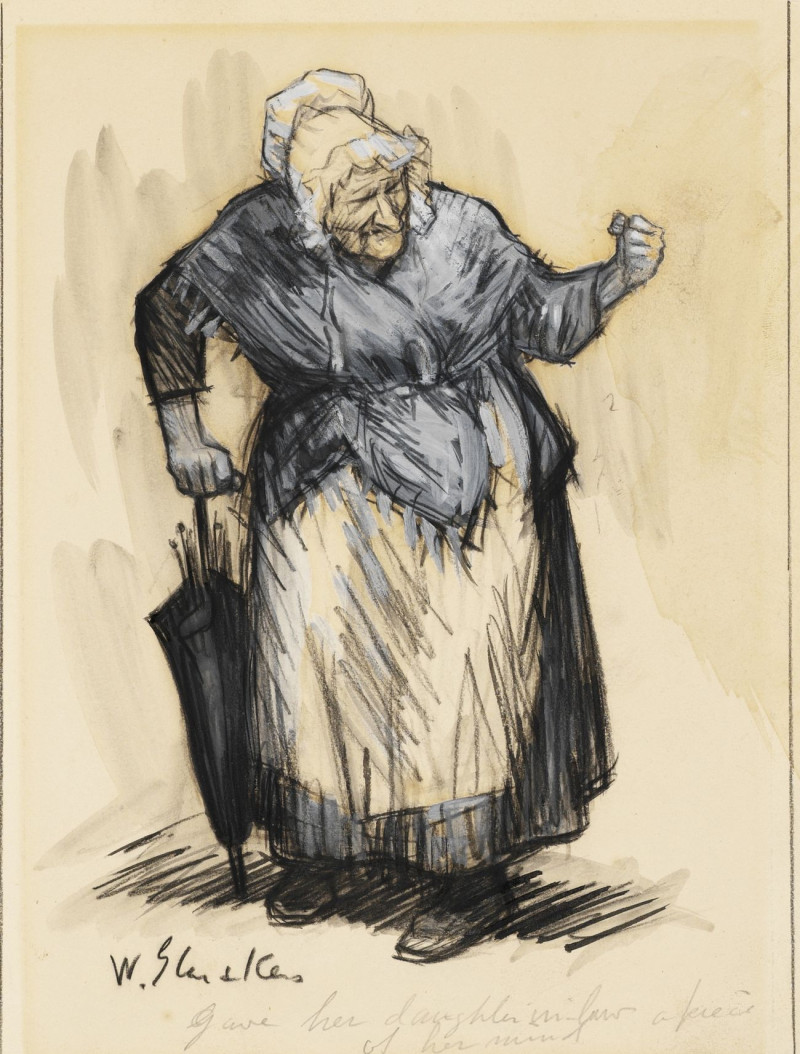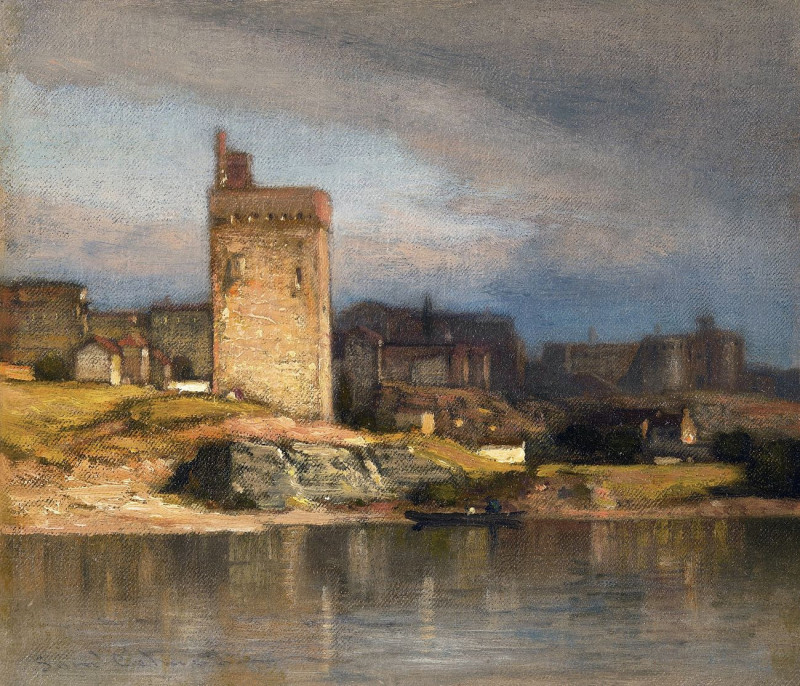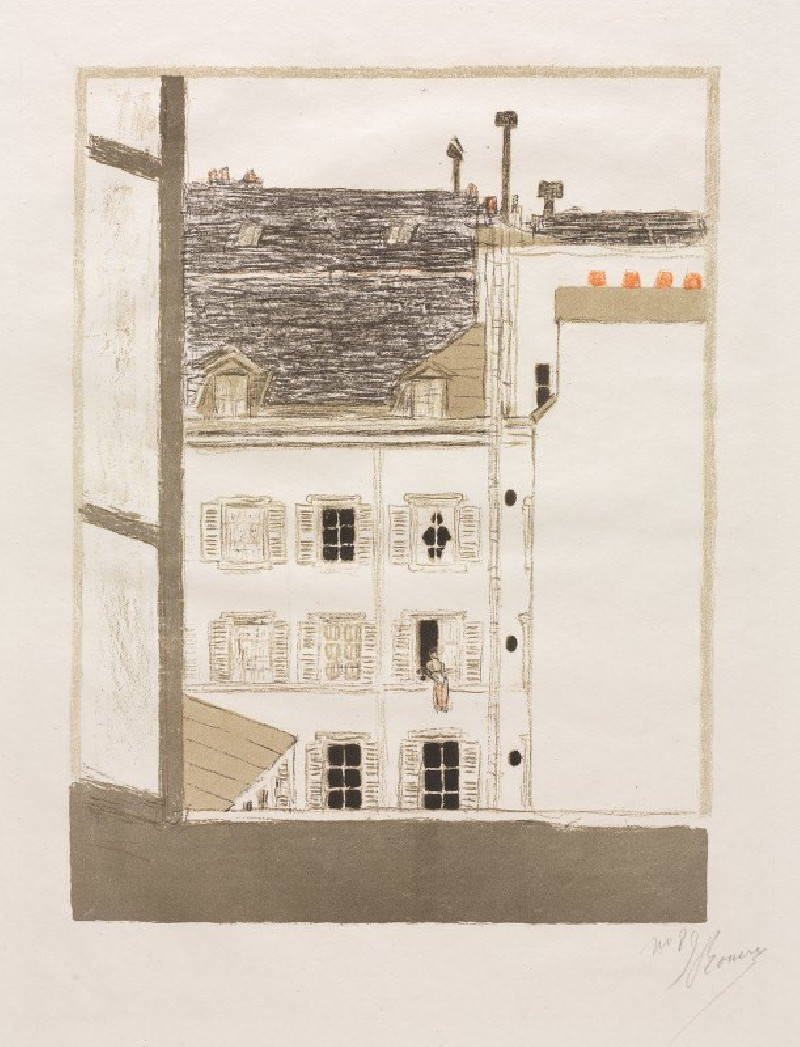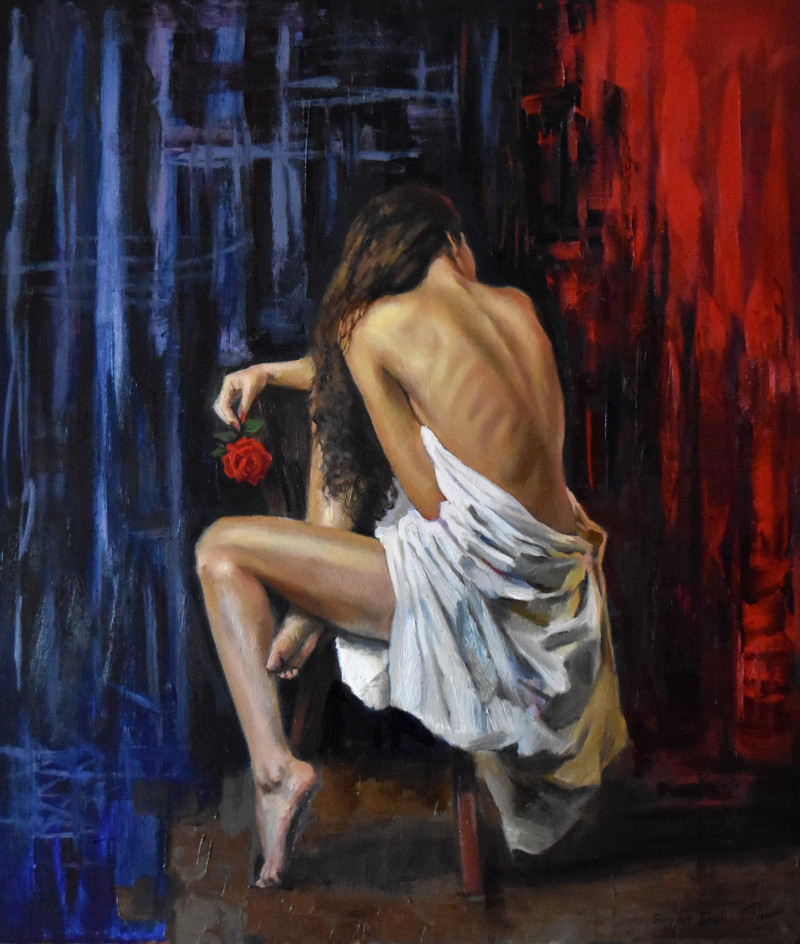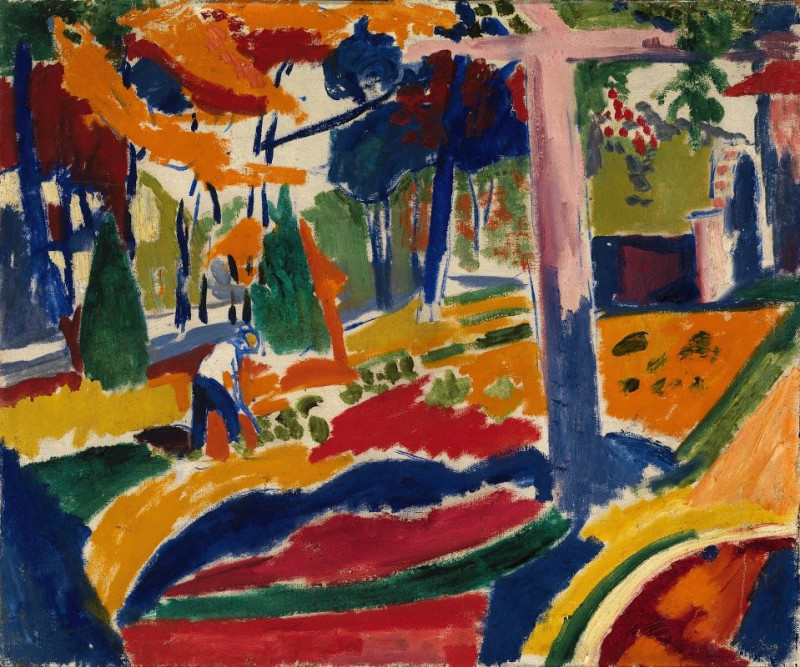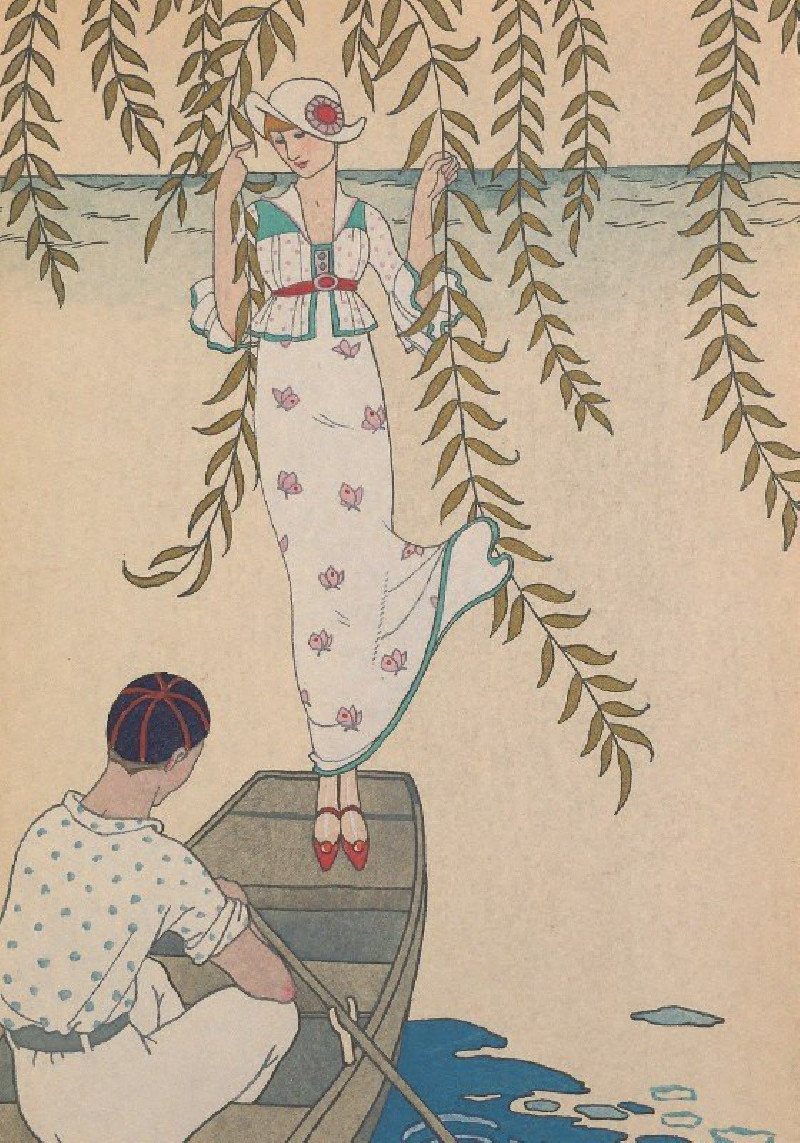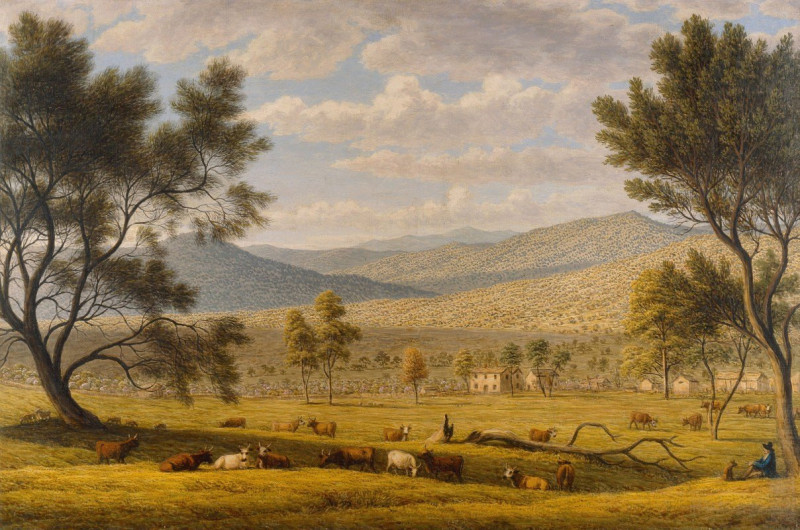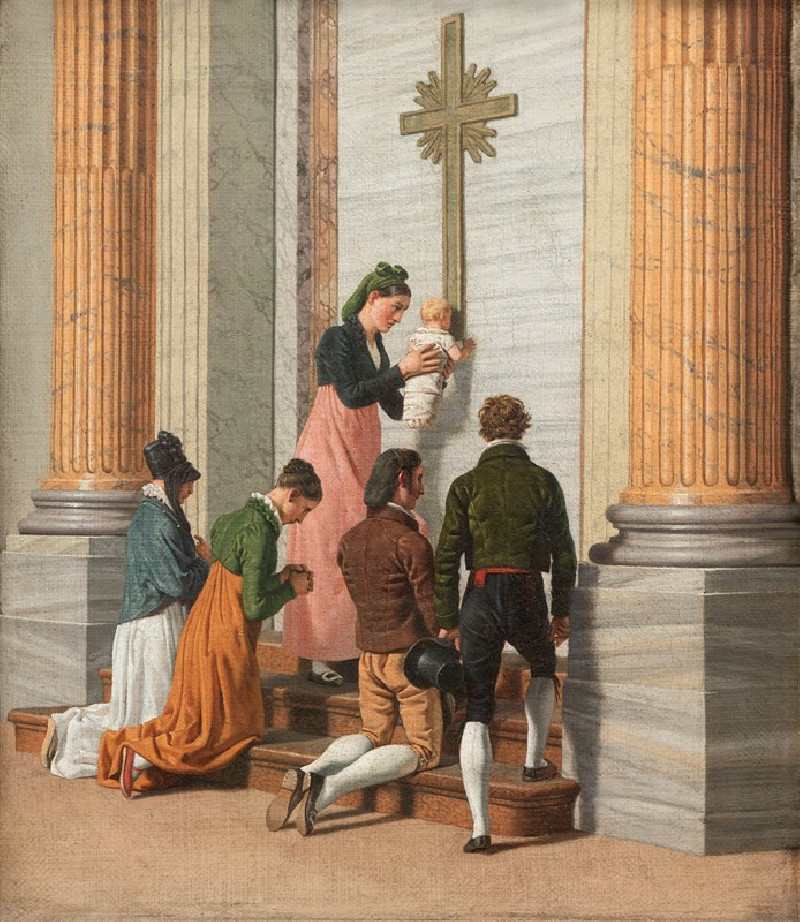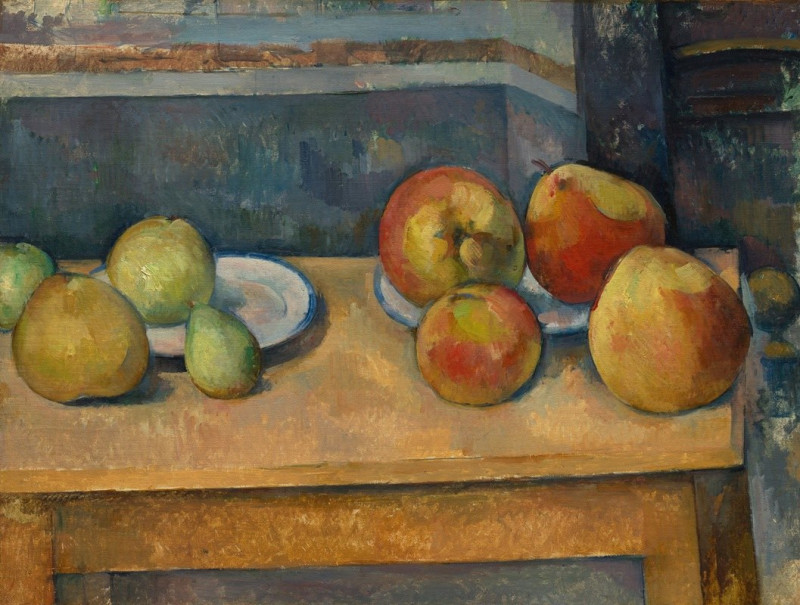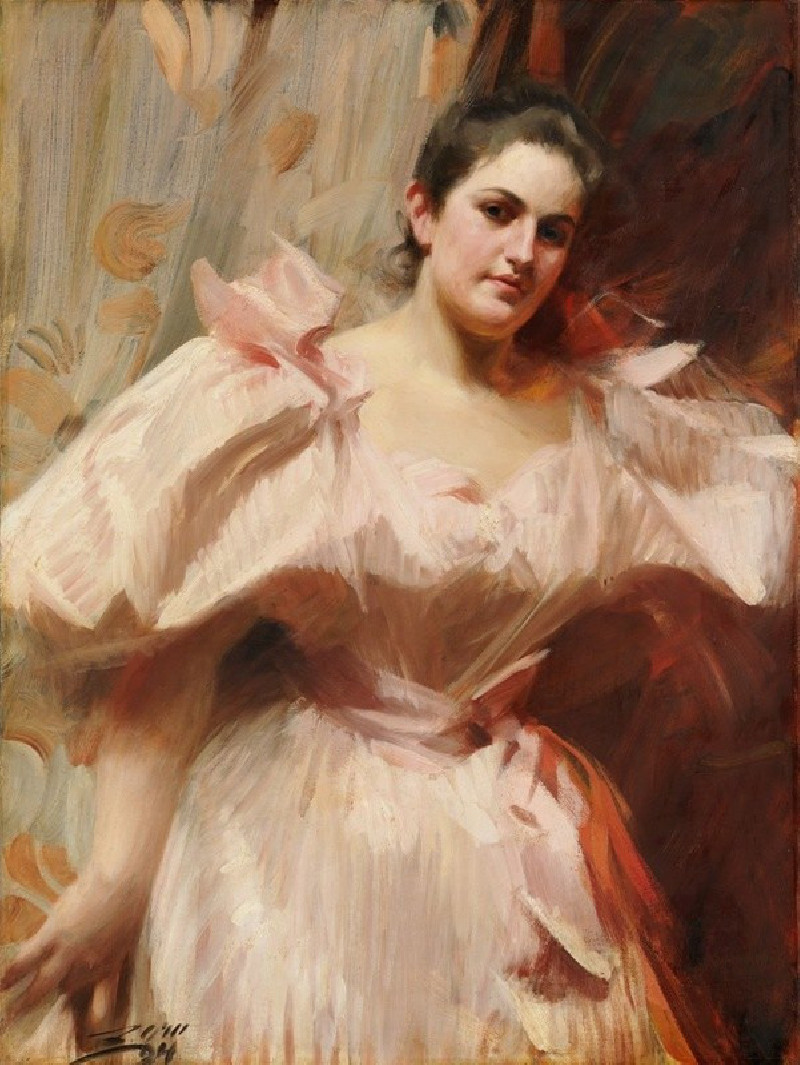The Priest Hans Madsen Is Moving Over To Horneland
Technique: Giclée quality print
Recommended by our customers
More about this artwork
This artwork titled "The Priest Hans Madsen Is Moving Over To Horneland" by Peter Hansen depicts a dramatic and somewhat mysterious scene. The composition primarily consists of two figures: an apparition-like image of a priest floating above a stormy sea, and below him, a man in a boat navigating through turbulent waters.The ghostly figure of the priest, depicted in a floating posture with his arms outstretched, appears ethereal and otherworldly. His expression is solemn, and his attire, resembling that of a traditional priest, adds a spiritual dimension to the image. This floating pose and the manner in which he is drawn evokes a sense of supernatural intervention or guidance.Below the priest, the second figure - possibly Hans Madsen himself - is shown struggling to control a small boat amidst the tumultuous sea waves. His expression conveys a mix of determination and concern, highlighting the adversities he faces. The details in his clothing and the sturdy pole he grips lend a realistic and rugged quality to the scene, emphasizing the harsh conditions he encounters.The contrast between the serenity of the floating priest and the vigorous effort of the man in the boat adds a layer of narrative depth. It may suggest themes of faith, guidance, and perseverance against challenges. The movement in the water and the expressive cloud formations in the sky further contribute to the painting's dramatic effect, enhancing the visual storytelling of this significant journey or transition.
Delivery
Returns
Coastal scenes, portraits, and art nudes by Peter Hansen (1868-1928). Hansen was a Danish painter known for his Impressionist style and his depictions of Danish landscapes and coastal scenes. In the 1890s, he traveled to Paris to study under some of the leading Impressionist painters of the time, such as Claude Monet and Camille Pissarro. The French Impressionist movement had a major influence on Hansen's work, and he began to develop a style that combined the Impressionist techniques of broken color and light with the strong tradition of Danish landscape painting.

